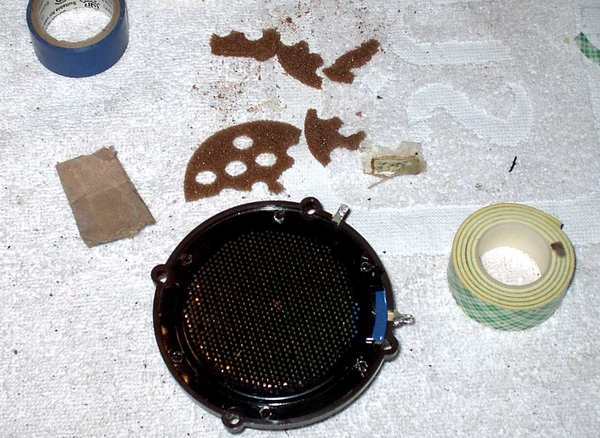Electrostatic Tweeter Restoration
Electrostatic Tweeter Restoration














Bildbreite korrigiert.
To thank the Author because you find the post helpful or well done.
Integrated pictures
Dear Paul
Since long I wanted to write this.
I congratulate you: You have written one of the few most interesting articles about electrostatic tweeter restoration.
You also have made 13 very nice photos to demonstrate the work.
Those pictures are at present attached. I think it would be worthwhile to include the pictures in your article. I know, it is a few steps more - but the result is so much better:
You bring the pictures down to 560 pixel width (in reality they can also be up to 600).
If they are still using more than 40 KB then you might have to reduce "quality". This process is normally not visuable. A few of your pictures are already under that storage size.
Then you load up the pictures according to this instruction made by Georg Richter. See Paragraph 3.4 there. The process is done in two steps: Upload of the pictures to the server, second step, placing your pointer t the place where the picture should be integrated and using the picture icon again for placing the picture.
I then would like to link your article to this article about "Splendid forum texts in English". Can you please tell me if you find any problems and also when you achieved it? I hope you like it then so much that you will have an other try for more repair articles ;-)
To thank the Author because you find the post helpful or well done.

Ernst,
I took all the attachments to this article, used Irfranview (http://www.irfanview.net/) to first size then second compress all the images. I then uploaded these images and placed them in the text of the article.
Should I post more pictures from my web pages into the text?
Should I remove the attached files which are now the embeded text pictures?
Please let me know if this is what you wanted?
Thanks, Paul.
To thank the Author because you find the post helpful or well done.
Perfect!
Dear Paul
You have made a perfect article and the pictures are now very instructive. Thank you for taking the effort.
Yes, you can just click edit again and then scroll down to see the button "Attachment(s)" which you click - just to see the 13 attached pictures with a red "X" in front of them. You now can click those "X", piece by piece and those attachments will be deleted from the hard disk of the server.
One has to know that integrated pictures - as we see now - can be deleted from a thread but not from the hard disk because the program can not know if you want to use them elsewhere in the future - even if they have no connection in the moment.
You can but don't have to add more pictures. It is only advisable if they really help to understand. I think we should use the possibility to integrate pictures for good articles as you did. They help normally very much to understand an article and also invite to read.
You have written an other very interesting article about IF Transformer Repair - and asked me if you should integrate the pictures there too. If you can take the time for that (since they are now too big) this would be most welcome. It has already 945 views and I will now be able to link them to the thread about "Splendid forum texts in English" which will increase the popularity since this link is on top when clicking the tab "Forum".
I hope we will find somebody some time who does care for such matters as I do now with my limited English and limited time. There are surely more members who could write such good articles but hesitate to do so for different reasons. Most often it is being afraid to do something in public or they think it is trivial what they have "to say". But we have to know that guests and members are often newcomers and we may help them to master all this new stuff. Thank you that you care so much for RMorg.
To thank the Author because you find the post helpful or well done.
? Electrostatic tweeter restoration

I was reading this article and have one question. Is it the case that electrostatic tweeters either work fully or not at all, or may they just work a little but not optimally so may be improved by the method here?
To thank the Author because you find the post helpful or well done.
Diminished output.

To thank the Author because you find the post helpful or well done.
